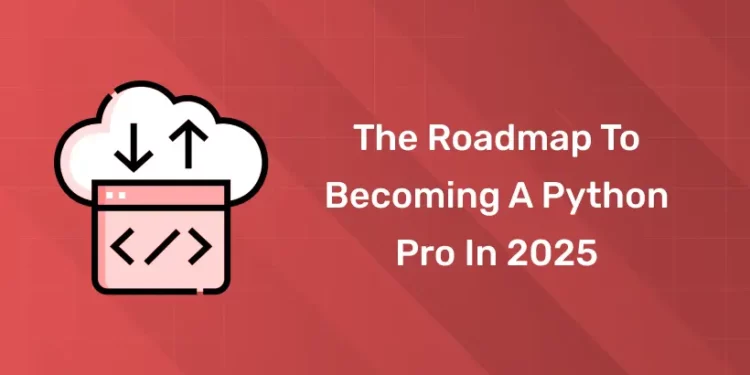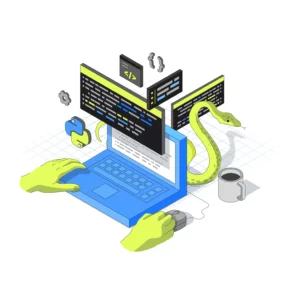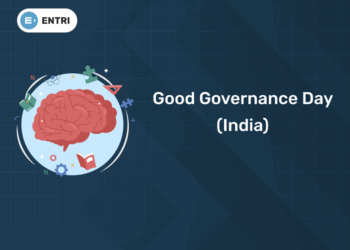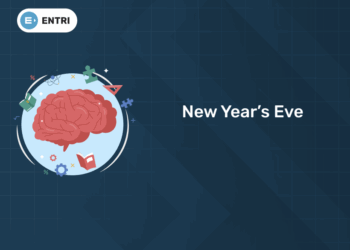Table of Contents
Python has solidified its position as one of the most popular and versatile programming languages, dominating fields like web development, data science, artificial intelligence, automation, and more. As technology continues to evolve, Python’s influence will only grow, making it an essential skill for aspiring developers and tech professionals. Whether you are a beginner or an experienced coder, becoming a professional Python developer in 2025 requires a clear roadmap, structured learning, and staying updated with the latest trends.
Check out this video on Python by Entri in Malayalam!
This blog outlines a comprehensive roadmap to becoming a Python Pro in 2025, covering everything from core programming concepts to advanced topics in AI, machine learning, and web development. By following this roadmap, you’ll be well-equipped to not only master Python but also build a successful career in the rapidly expanding tech landscape. Let’s dive into the steps and skills you need to become Python Pro!
Unlock Your Coding Potential with Our Python Programming Course – Enroll Today
Introduction: Enter the Python
Python is a high-level, interpreted, general-purpose programming language known for its simplicity, readability, and versatility. It was created by Guido van Rossum and first released in 1991. Python’s design philosophy emphasizes code readability and allows developers to express concepts in fewer lines of code than languages like C++ or Java.
Multiple programming paradigms, such as procedural, object-oriented, and functional programming, are supported by Python. To put it simply, this means that it is adaptable and enables you to write code in several ways, such as procedurally, object-oriented, or functionally, which involves treating your code like a mathematical problem, generating digital representations of objects or concepts, or giving the computer a to-do list.
Common Use Cases of Python:
Here are some of the common use cases of python for your better understanding.
- Web Development: Python is widely used to build websites and web applications, with frameworks such as Django and Flask.
- Data Science: Python is a great asset for you if you work closely with data. Patterns and graphs can be made with Python from the existing large amounts of data. Libraries like pandas and matplolib are the vital parts in such processes.
- Artificial Intelligence and Machine Learning: Python’s simplicity and powerful libraries (e.g., TensorFlow, Keras, PyTorch) make it a popular choice for building AI models that can learn from data, like recommending videos or predicting trends.
- Automation/Scripting: Python scripts are used to automate repetitive tasks such as file management, sending emails or website scraping.
- Game Development: Libraries like Pygame are used for game development, thus getting knowledge on how games work.
- Scientific Computing: Python is widely used in scientific computing and research for solving complex mathematical problems and simulating experiments due to libraries like SciPy and SymPy.
Why learning Python is beneficial?
It’s already been established that Python is a crucial part of the programming world. Therefore, there are bound to be several reasons as to why learning Python is advantageous. In addition to its widespread use, Python finds use in a wide range of sectors, including technology, finance, healthcare, and more. Gaining knowledge of Python ensures better job results and opens several work options. Check out reasons as to why it is beneficial:
- Easy to Read and Learn: One of the biggest strengths of Python is that, it has a clear, simple syntax (the rules for writing code). This makes it beginner-friendly and makes you less worried about complicated rules that other languages have. An additional benefit to this is that, you can focus more on solving the complex programmes rather than memorising the rules.
- Versatile and Powerful: Python is used for a wide variety of things including building websites, analysing data, automating tasks, creating games, and doing scientific research. This makes the Python programme to be super flexible and suitable for multiple types of projects.
- High Demand: As said earlier, the programming language is high in demand as it is one of the most popular languages and is used by companies globally. As a result, there are plenty of job opportunities for python developers in various fields.
- Supportive Community: The programme is so popular that you have an abundance of community groups consisting of Python enthusiasts. This is a blessing especially if you are stuck in a certain step as you will be exposed to a lot forums, tutorials, and updates for your convenience.
- Automation: Ever feel bored while doing a particular work over and over? Python, is the solution to your boredom. You can automate the programme to do tasks such as file management and sending emails, so that you can focus on more complex aspects.
- Resources: Python boasts over 137,000 libraries and frameworks which are pre-built for you to use while engaging in complex tasks.
Why Python is the Programming Language of the Future
Python has emerged as one of the most popular and versatile programming languages of our time. As technology evolves, Python’s relevance and demand continue to grow, making it the programming language of the future. Here’s why Python is poised to dominate the tech landscape in the coming years:
1. Simplicity and Readability
One of Python’s core strengths is its simplicity. Python’s syntax is clean, intuitive, and easy to learn, making it an ideal language for both beginners and experienced developers. Unlike many programming languages that require intricate syntax, Python allows developers to focus on solving problems rather than grappling with complex code structures. This readability ensures that code is maintainable and collaborative, which is crucial as software projects scale.
Example:
This simple loop is easy to understand, even for those who are new to programming.
2. Wide Range of Applications
Python’s versatility is unmatched. It can be used in almost any domain of software development, as stated before. This is one of the driving factors as to why Python is the programming language of the future. It can adapt to many different industries and remain relevant even when new technologies emerge.
3. Artificial Intelligence and Machine Learning
As artificial intelligence (AI) and machine learning (ML) continue to revolutionize industries, Python’s prominence in these fields solidifies its place in the future. Python offers a rich ecosystem of libraries (e.g., TensorFlow, PyTorch, Keras, Scikit-learn) that simplify complex AI and ML algorithms.
- Ease of Use: Its simple syntax enables quick prototyping and experimentation.
- Strong Community Support: Python has a vast community that contributes to its growth in AI/ML, ensuring continuous improvements.
4. Thriving Ecosystem and Libraries
Python boasts an extensive ecosystem of libraries and frameworks that enable developers to build applications faster. From scientific computing (NumPy, SciPy) to web development (Django, Flask) and from data visualization (Matplotlib, Seaborn) to natural language processing (NLTK, spaCy), Python offers a library for nearly every purpose. This ecosystem accelerates development, saving developers time from building solutions from scratch.
5. Growing Demand in Industry
Python’s popularity has surged across industries such as finance, healthcare, entertainment, and more. According to industry surveys and job portals, Python consistently ranks as one of the most in-demand programming languages. From startups to tech giants like Google, Amazon, and Facebook, Python is a critical part of the tech stack. The growing demand for Python developers is a strong indicator that Python will continue to thrive in the future.
6. Vibrant Community and Open-Source Culture
Python has one of the most active and supportive developer communities. The open-source nature of Python has led to the rapid growth of libraries, frameworks, and tools, all freely available to developers. Whether you are facing a coding challenge or looking for a specific solution, the Python community offers abundant resources, tutorials, forums, and repositories. This collaborative culture ensures that Python continues to evolve with new tools, making it future-proof.
7. Cross-Platform Compatibility
Python is highly portable, running seamlessly on different operating systems like Windows, macOS, and Linux. This cross-platform compatibility makes Python the ideal choice for developing applications that need to run across various environments. Python’s ability to integrate easily with other programming languages and systems also adds to its versatility in enterprise environments.
8. Advances in Education and Research
Python’s simplicity and growing adoption in educational institutions ensure that the next generation of developers will be well-versed in Python. Many universities and coding bootcamps have integrated Python into their curriculum, especially in computer science, data science, and AI-related courses. Python is often the first language students learn, giving it a strong foundation for future growth.
9. Python’s Role in Emerging Technologies
As we look to the future, Python is well-positioned to play a significant role in emerging technologies:
- Internet of Things (IoT): Python is increasingly being used in IoT projects, as it can interact with hardware and process data from connected devices.
- Blockchain: Python is gaining traction in blockchain development due to its simplicity and strong frameworks like PyCrypto.
- Quantum Computing: Python is also making strides in quantum computing with libraries like Qiskit.
Which step are you stuck on?
The Roadmap to become a Python Pro Developer in 2025
1: Which of the following data types is immutable in Python?
Here’s an in-depth guide to help you become a proficient Python Pro developer in 2025. This roadmap covers all essential skills, frameworks, and tools that will empower you to excel in the Python Pro developer ecosystem.
1. Start with the Basics
Start your journey by understanding the core fundamentals of Python. Learning Python basics is the foundation of becoming a proficient developer. By understanding Python’s simple, readable syntax, you can easily comprehend the more complex programmes which makes it a great first language for beginners. Refer the below list to understand what you have to learn.
Key Concepts:
- Syntax: Learn how Python’s syntax is different from other languages (e.g., no semicolons, indentation-based structure).
- Variables and Data Types: Understand primitive data types like integers, floats, strings, and booleans.
- Operators: Learn arithmetic, comparison, logical, and bitwise operators.
- Input/Output: Practice taking input from users and printing output.
- Conditionals: Use
if,elif, andelsestatements to control program flow. - Loops: Learn about
forandwhileloops to handle repetitive tasks. - Functions: Understand how to create reusable code blocks using functions (
defkeyword).
Resources:
- Free tutorials on Python.org, or beginner-friendly platforms like W3Schools.
- Books: “Automate the Boring Stuff with Python” for practical coding exercises.
2. The Next Level
Once you fully understand the basics, you can move on to more complex concepts. Python is heavily used in problem-solving, and mastering data structures and algorithms is essential for coding efficiency. Becoming comfortable with data structures and algorithms is essential for writing efficient and optimized Python code. Start by learning the built-in Python data structures like lists, tuples, sets, and dictionaries, which are foundational for organizing and storing data. Understanding when to use each of these based on time and space efficiency is crucial.
Move on to more complex data structures like linked lists, stacks, queues, trees (especially binary trees and binary search trees), heaps, and graphs. Each has unique properties and is suited for specific problems. Practice implementing these structures manually to strengthen your understanding.
- Lists: Learn how to manipulate lists using slicing, sorting, and filtering.
- Tuples: Understand the immutable data type and when to use it.
- Dictionaries: Explore key-value pairs and their applications.
- Sets: Learn about unique data storage with sets.
- Stacks and Queues: Use collections like
dequefor queue operations. - Linked Lists: Implement single and doubly linked lists.
- Trees and Graphs: Learn traversal algorithms (DFS, BFS) for tree and graph data structures.
- Sorting and Searching: Study popular algorithms like QuickSort, MergeSort, Binary Search.
- Recursion: Understand recursion and backtracking for solving complex problems.
- Advanced OOP: Learn about polymorphism, abstraction, encapsulation, etc.
Also read: Object Oriented Programming Python: An Overview
Practice Platforms: LeetCode, HackerRank, or Codeforces for coding challenges.
3. Projects and Challenges
Take on challenges to apply what you have learnt till now. This is a great way to review your understanding along with a practical approach. Here are some suggestions for you to consider and tackle:
- Beginner projects: To-do list app, web scraper, simple calculator, text-based games, etc.
4. Web development
Ready to try the real deal? This is your first step into the intricacies of Python. Feel free to explore more into diverse frameworks within the Python programming language.
- Learn how to build web applications using frameworks such as Flask (for light work) or Django (for large-scale work).
- Flask: Build small apps, understand routing, templates, and databases.
- Django: Build complex apps, learn about ORM (Object-Relational Mapping), user authentication, and REST APIs.
- While Python handles the back-end, understand how front-end web technologies like HTML, CSS, and JavaScript Basics, work to create full-stack applications.
- Learn how to work with databases like, PostgreSQL, MySQL, SQLite, and interact with them using Python.
5. Advanced Python
The advanced topics are no joke and there is no cheat “code” to get there easily. These topics require you to be a master of the following advanced programmes:
- Asynchronous Programming: Learn about
asynciofor handling asynchronous tasks, concurrency, and parallelism. - Learn how to write unit tests using
unittest,pytest, or other frameworks so that you can test whether your code is error-free and reliable. - Understand common design patterns like Singleton, Factory, Strategy, etc., and how to use them.
- Learn how to build RESTful APIs with Flask or Django, and use tools like
Postmanfor testing. - Understanding the basics and intricacies of web security like SQL injection, Cross-Site Scripting, and how to write secure Python code.
What is asynchronous programming?
Asynchronous programming is a way of writing code so that your program doesn’t have to wait around for tasks to finish before moving on to the next one. Think of it as how when you are in a restaurant you can do other things (like checking your phone, or interact with others) after you have placed the order, instead of waiting to get each process of your order done. In code, this means that your programme can do multiple things at a time instead of only one thing at a time.
6. Explore Popular Python Libraries and Frameworks
Exploring popular Python libraries and frameworks is essential for expanding your development skills and tackling real-world problems efficiently. Python has a rich ecosystem of libraries that simplify tasks in various domains. For web development, frameworks like Django and Flask allow you to build powerful, scalable web applications with minimal setup.
In the realm of data science and machine learning, libraries like NumPy, Pandas, Matplotlib, and Scikit-learn are indispensable for data manipulation, visualization, and modeling. TensorFlow and PyTorch are go-to frameworks for deep learning and AI applications. If you’re into automation, libraries like Selenium are suited for browser automation and BeautifulSoup for web scraping are widely used.
For Web Development:
- Django: A high-level Python framework for building web applications rapidly.
- Flask: A lightweight micro-framework for smaller projects and APIs.
- FastAPI: Known for building high-performance APIs.
Data Science and Machine Learning:
- NumPy and Pandas: Essential for data manipulation and numerical computations.
- Matplotlib and Seaborn: Libraries for data visualization.
- TensorFlow and Scikit-learn: Frameworks for machine learning and artificial intelligence.
Automation and Scripting:
- Selenium: Web scraping and browser automation.
- BeautifulSoup: Parsing HTML/XML documents for web scraping.
- PyAutoGUI: Automating GUI tasks.
7. DevOps and Deployment
Do you feel like your work or code is reliable enough to be deployed? Well, this is the right time to do it! By learning the following steps you’ll be able to deploy your works in no time:
- Understand how to containerize your Python applications using Docker.
- Try to learn the basics of Continuous Integration/Continuous Deployment (CI/CD) to automate testing and deployment.
- Leverage cloud services like AWS, Google Cloud, or Azure to deploy web apps, data processing, etc.
- Learn how to deploy your Python web applications using tools like Gunicorn, Nginx, or Apache.
8. Continue Learning & Contributing to Open-source
In any field of expertise, continuous learning always gets rewarded no matter the circumstances. Always volunteer to learn more complex aspects and challenge yourself to attempt it by yourself. Enrol for open-source Python projects which in return, would help you to gain more practical knowledge and experience on a professional basis. This way, you get to improve your skills and grow your network.
Python is an ever-evolving programming language that requires you to constantly follow it to gain insights on latest features and best practices by reading blogs, attending conferences and exploring new tools and libraries.
9. Specialization
Specializing based on your career goals is a critical step in becoming a Python pro, as it allows you to focus your learning and skills on a specific domain where you can make a significant impact. Python is incredibly versatile, and the path you take largely depends on the type of work or industry you’re interested in.
1. Web Development:
If you’re drawn to web applications, focus on mastering Django or Flask for backend development, and expand your knowledge in frontend technologies like HTML, CSS, and JavaScript. Learning how to build and deploy REST APIs, working with databases, and understanding security best practices are essential here.
2. Data Science and Machine Learning:
If you’re passionate about data, focus on learning libraries such as Pandas, NumPy, Matplotlib, and Seaborn for data manipulation and visualization. For machine learning, dive into Scikit-learn, TensorFlow, or PyTorch. Specialize in data analysis, building machine learning models, and deep learning, with a focus on handling large datasets or working on real-time predictions.
3. Automation and Scripting:
If you want to automate repetitive tasks or create efficient systems for organizations, learn how to use Python for web scraping, task automation, and system administration. Master libraries like Selenium, BeautifulSoup, and paramiko for automation tasks, and consider using Docker for containerization.
4. Game Development:
For those interested in game development, focus on libraries such as Pygame or Godot for 2D and 3D game design. Understanding game mechanics, physics engines, and user interface design are key here.
5. Cloud Computing and DevOps:
If cloud technologies and infrastructure management interest you, learn AWS, Azure, or Google Cloud to deploy Python applications. Master tools like Docker and Kubernetes for containerization and orchestration, and become familiar with CI/CD pipelines and automation in the DevOps space.
6. Cybersecurity:
Python is widely used for cybersecurity tasks like penetration testing, building security tools, and automating security checks. Learn how to write security scripts, work with APIs, and use libraries like Scapy, requests, and paramiko.
Unlock Your Coding Potential with Our Python Programming Course – Enroll Today
🚀 Start Coding Today! Enroll Now with Easy EMI Options. 💳✨
Gain expertise in Django and open doors to lucrative opportunities in web development.
Start Learning With EMI Payment OptionsBecoming a Python Pro: Conclusion
If you have reached till this part of the blog, we are proud of you (claps). It shows that you have the determination to proceed even after having all the jargon thrown on you. Mastering Python is no easy feat and it is recognized in such sense. With this roadmap, you can confidently start your journey onto becoming a ‘Python’ yourself.
If you feel like you could use some help in your journey, you can enrol in our Python programming course for sessions with experts. top quality materials, and placement assistance. So what are you waiting for? Check it out and start your journey to become a Python Pro!
|
Related courses |
|














